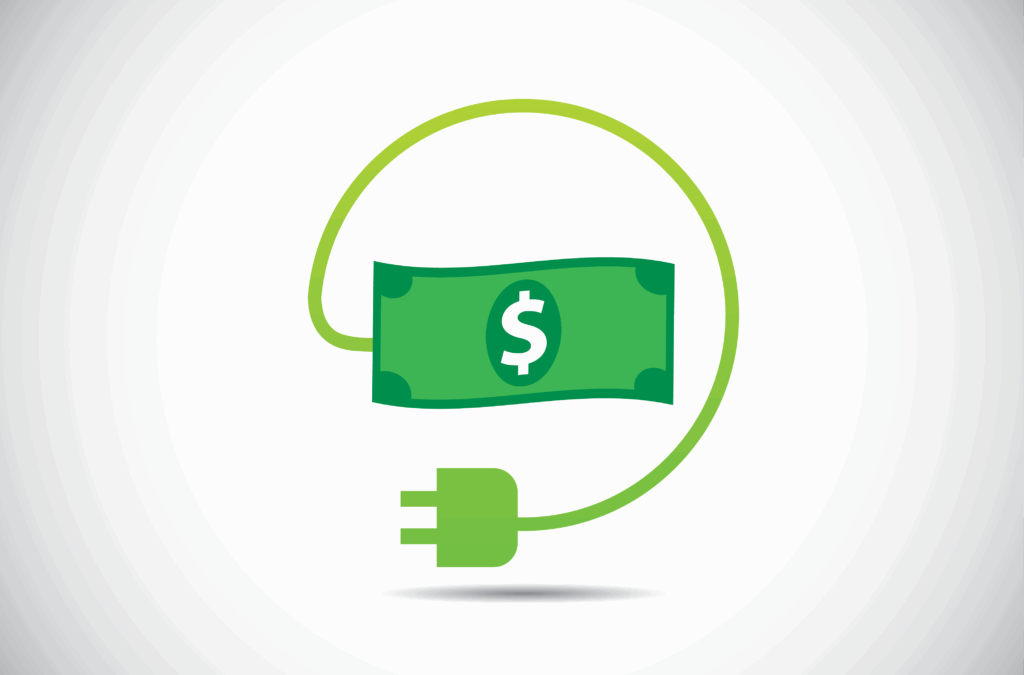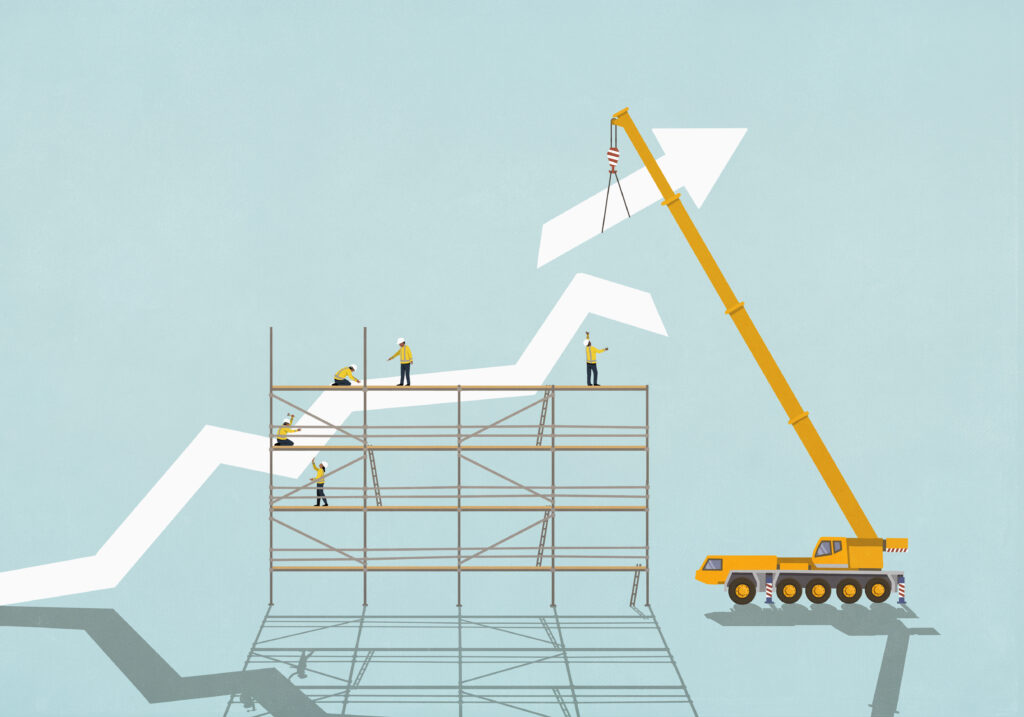
AI Puts on a Hard Hat

Josh Butler was leading development of computer-vision based safety systems for self-driving cars when he saw that the perception technology being developed to scan the area around autonomous vehicles could make workplaces much safer.
So he founded safety analytics and workers compensation startup CompScience, which is putting AI to work analyzing thousands of hours of video to flag unrecognized risks and prevent injuries. Pairing low-cost video with AI and hazard analysis helps drive down injury rates and reduce one of the largest insurance costs for middle-market companies.
For me, it was really about the mission and the social impact in self-driving cars. That space is all about building what could be the most important safety feature we’ve ever created to prevent accidents. We’ve poured tens of billions of dollars into solving that problem. Probably the most dangerous thing the average person does every day is hop in their car and go driving. As I saw that market developing and getting closer to reality, it was a dream job—to work on self-driving cars and collaborate with some incredible engineers.
A lot of my work [at electric vehicle company NIO] focused on developing a thesis around how safe the technology needed to be—with the idea that, at some point, you’re morally obligated to roll it out because of the lives it could save.
How did I get involved with CompScience? It really goes back to my father-in-law’s accident on a construction site. He worked in construction for years, supporting a family of five and doing everything from general labor to running heavy machinery—including the crane he was operating when the accident happened. What’s especially hard is that he saw the warning signs. He recognized the risks and knew the environment wasn’t safe, but he wasn’t in a position to advocate for the changes that might’ve prevented it.
The thesis for this company that we started five years ago is that we can prevent millions of injuries like his. These are life-changing—not just for the person who gets hurt, but for their families, too. And we thought, why not use the same kind of perception tech that powers self-driving cars? That’s the stuff I’ve always been fascinated by.
I was really focused on time to market initially, and we got a [perception technology and safety analytics] system out that we would license to large companies. Early on, we found that while a few forward-thinking companies had the resources to innovate and test new technologies like this, 99% just don’t. They don’t have that kind of team, that kind of function, or the in-house expertise to evaluate and adopt something new.
It was really a couple of years in when we started seeing a major gap—especially in this middle market—that no one is addressing and that is spending a lot of money on insurance. They think they’ve basically taken care of their risk by buying the insurance. That is a space where we could really make a huge impact with this technology specifically. So, we’ve really narrowed our focus over the years to concentrate on this middle market that is so in need of better services.
One key thing was realizing that while there’s a lot of fancy sensor technology out there—lidars, radars, ultrasonic sensors—you have full control over those sensors when you’re building a car. But in work environments, it’s much more dynamic, and you don’t know what sensors you’re going to find. Most of the time, the sensors in place are just lower-end camera sensors.
If you wanted to add other sensors on top of that, you’d run into major challenges around calibration, syncing, and all that. So early on, we decided that instead of building a complex, multimodal system using radar, lidar, and more, we’d keep it simple.
We designed it so the system could work off of a cell phone, solar-powered trail cams, 5G cameras—basically, any existing camera across any facility. We knew we needed to work with what was already there. Because once you add a bunch of hardware requirements, adoption becomes 10 times harder—maybe even a hundred times harder. That was a big one.
Well, with any insurance, you always create moral hazard. Moral hazard is basically the misalignment of incentives that happens when you transfer your risk to someone else—you’re less inclined to invest in preventive actions or purchase safer equipment. In fact, customers are often disincentivized from sharing things they know might be unsafe in their work environments, because they’re worried the carrier might penalize them.
We’re completely changing the relationship between the insured and the insurer. We’re asking the customer to trust us with a very inside look at their operations—like, a thousand times more intelligence than you’d get from an inspector walking through once a year with a clipboard. And they’re willing to do that because we’ve shown just how much of an impact we can have when they share with us.
For manufacturers, we reduce injury rates by 55% in the first year when they participate [in the safety technology bundled with workers compensation insurance]. That’s probably our strongest vertical. But in general, we see between a 25% and 55% reduction in injury rates.
The fact that we have our customers’ trust—and that they’re willing to share more about their operations— means we can have an even bigger impact. That’s how you address moral hazard: by actually aligning our incentives with theirs.
And this isn’t just a workers comp thing. We’re already seeing this happen in cyber. We didn’t invent active insurance. You see it with companies like Coalition—they’re doing active scans of your web properties and services. You see the same in auto with Nirvana [Insurance] or Fairmatic, where telematics plays a big role. People are willing to share data because they get valuable insights in return.
What’s been missing in workers comp is that no one’s been able to figure this out—because it’s even more dynamic and harder to understand real-world risks than web risks. And, frankly, no one wants to wear something that beams their every move back to their employer.
What’s great about using computer vision is that it’s actually anonymous. It’s not about tracking individuals—it’s about understanding systemic risk. And we’re able to get even more data than you could from any kind of wearable or telematics device. It’s a really rich data source—the richest you could hope for. Cameras are cheap now. Bandwidth is cheap. The challenge is turning all that into valuable insights that actually drive down injury rates.
We knew that if we could prove we’re able to reduce injury rates for our customers, then we had a real business—everything else would follow.
The first step is running a diagnostic. It’s kind of like going to the mechanic. It looks like a standard inspection on the surface, but we’re analyzing thousands of hours of video—far more than you’d ever get from a typical walk-through.
We generate a whole set of analytics. We benchmark customers across different risk factors. We look at things like ergonomic risks, slip/trip/fall risks, struck-by risks—like when you’re operating forklifts—and caught-in risks, which are typically high-consequence events. Today, we look at over 20 different risk factors. From there, we identify where to allocate resources to reduce injury rates most effectively. And we can show exactly what’s happening on the floor that’s driving those risk scores up.
Our experts then provide really specific, actionable recommendations— like, “Here are four things you can do to address this particular risk.” The customer chooses what’s best for their operation, but we want to see that change implemented within a couple of months and the risk scores start to come down—because that translates to a lower likelihood of a serious injury.
Then we run it again. We ask: did the change happen? And our customers see the impact—both immediately in their injury rates and over time in their premiums.
We’re ramping up. It’s an exponential curve. I think every single person on the team has helped prevent at least a dozen severe injuries already. And we’re just getting started.
One key to making this mission a reality is taking the technology international. When you look globally, you see countries with fatality and severe injury rates that are 10 times higher than those in the U.S.
Take forklift drivers—one in 11 are injured on the job every year. It’s a dangerous role, and that’s not even the most dangerous. Steelworking, construction, forestry, agriculture, fishing—those are extremely high-risk industries. We plan to expand into those verticals, but a big focus for us now is figuring out how to distribute this technology to the parts of the world that need it most.
We’re excited to have over 175 customers today. We’ve grown about 10 times over the last 18 months and are continuing to expand into new verticals like construction, retail, and restaurants. These are also dangerous environments—but with very different risk profiles.




